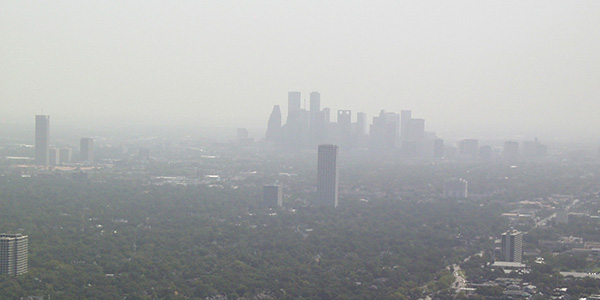A .gov website belongs to an official government organization in the United States.
A lock () or https:// means you've safely connected to the .gov website. Share sensitive information only on official, secure websites.
8 March 2021
adapted from the story by CIRES Communications

Researchers have mapped global ground-level ozone concentrations by year for the Global Burden of Disease study using a data fusion approach, the first time this method was applied to ozone observations.
The research team, led by the University of North Carolina with CSL co-authors, fused an ozone database – the Tropospheric Ozone Assessment Report (TOAR) – with output from nine global atmospheric chemistry models. Then they used those data to produce ozone exposure estimates from 1990-2017 for the Global Burden of Disease. Their study was published today in Environmental Science & Technology.
By doing a data fusion, the researchers were able to combine different sources of information, making use of the advantages of each. "This was a difficult project, in part because of the large amounts of data involved, but also because ozone measurements are lacking in so many important world regions with severe air pollution and high population," said UNC professor Jason West, one of the paper's authors.
The team used data from TOAR – the largest-ever compilation of ozone observations from more than 8,800 global sites – and estimates from nine different global atmospheric models to produce annual maps of ozone concentrations for every year from 1990 to 2017, at a spatial resolution of approximately 10 kilometers.
The findings were used in the Global Burden of Disease (GBD) 2019 study, which estimated that about 365,000 people around the world died in 2019 from exposure to ozone pollution. Ground-level ozone air pollution is damaging to human health and to plant growth.
The study was led by UNC graduate students Marissa DeLang and Jacob Becker, with West and UNC professor Marc Serre. They collaborated with Kai-Lan Chang and Owen Cooper, CIRES scientists working at CSL, and Martin Schultz of Germany. Cooper and Schultz chair TOAR, the global compilation of ozone observations. Other co-authors from around the world provided additional ozone measurements and model estimates.
DeLang, M.N., J.S. Becker, K.-L. Chang, M.L. Serre, O.R. Cooper, M.G. Schultz, S. Schröder, X. Lu, L. Zhang, M. Deushi, B. Josse, C.A. Keller, J.-F. Lamarque, M. Lin, J. Liu, V. Marécal, S.A. Strode, K. Sudo, S. Tilmes, L. Zhang, S.E. Cleland, E.L. Collins, M. Brauer, and J.J. West, Mapping yearly fine resolution global surface ozone through the Bayesian Maximum Entropy data fusion of observations and model output for 1990–2017, Environmental Science & Technology, doi:10.1021/acs.est.0c07742, 2021.
Estimates of ground-level ozone concentrations are necessary to determine the human health burden of ozone. To support the Global Burden of Disease Study, we produce yearly fine resolution global surface ozone estimates from 1990 to 2017 through a data fusion of observations and models. As ozone observations are sparse in many populated regions, we use a novel combination of the M3Fusion and Bayesian Maximum Entropy (BME) methods. With M3Fusion, we create a multimodel composite by bias-correcting and weighting nine global atmospheric chemistry models based on their ability to predict observations (8834 sites globally) in each region and year. BME is then used to integrate observations, such that estimates match observations at each monitoring site with the observational influence decreasing smoothly across space and time until the output matches the multimodel composite. After estimating at 0.5° resolution using BME, we add fine spatial detail from an additional model, yielding estimates at 0.1° resolution. Observed ozone is predicted more accurately (R2 = 0.81 at the test point, 0.63 at 0.1°, and 0.62 at 0.5°) than the multimodel mean (R2 = 0.28 at 0.5°). Global ozone exposure is estimated to be increasing, driven by highly populated regions of Asia and Africa, despite decreases in the United States and Russia.